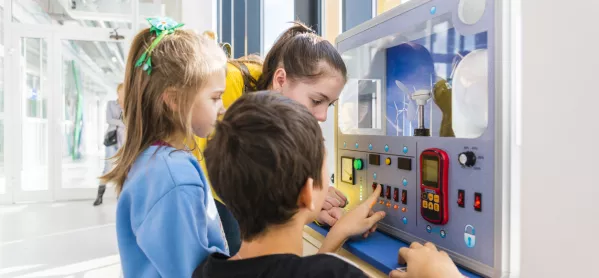- Home
- How teachers can help to save our museums
How teachers can help to save our museums

In times of hardship, our arts, culture and heritage must always be saved.
For example, during the Second World War, 80 truckloads with 2,000 pieces of art were moved from London to a Welsh slate mine to be safely preserved for future generations.
Now we need to harness this same spirit. Not to move art and heritage, but to ensure that it stays where it is.
There are more than 1,500 independent museums and heritage attractions in the UK, and they need our help.
Coronavirus: The threat to museums
Many teachers frequent museums and galleries and to put this into context, as an example, about 98 per cent of the Florence Nightingale Museum’s income comes from admissions and retail, including school visits.
It faces the very real threat of closure due to this lost revenue and no doubt many others are in the same position.
The National Lottery Heritage Fund has said it will do what it can to help the heritage community but has also warned that it “cannot help everyone in every way”. Historians and academics are trying to help too, such as with Dan Snow’s #saveourheritage fundraiser.
But we teachers can help, too - not by giving money but time and energy.
Creating resources
I have spent the past few months creating educational resources about Victorian life for a museum local to me, as part of my maternity leave with the MTPT Project and as a way to delve further into a period of history, at a local level.
These resources include creating questions and information sheets based around the historical context and primary sources linked to artefacts in the museum loan box.
These will enable teachers to use the artefacts in lessons at school in innovative ways to either teach local history or lead a discussion on wellbeing over time.
Schools borrowing loan boxes benefits museums both financially and in terms of raising the profile of the museum.
This will be especially important post-coronavirus where it may be less practical for school groups to visit small museums, but also means the essence of museums can go into the classroom and teachers can use the resources and artefacts to craft a stimulating series of lessons.
A two-way benefit
This is not just beneficial for museums but it can have a positive impact on teaching and learning, too.
Working more closely with museums can help teachers grow and develop, and think beyond their setting. I teach in an academically selective school, so working with the museum made me consider the range of abilities and needs again.
It has been enriching for me to develop my subject knowledge: who knew fern-mania was a thing in Victorian Britain? Or what inspired the decoration on custard creams?.
Additionally, working more closely with museums can deepen teachers’ subject knowledge; for me, it has enriched my historical knowledge by adding both breadth and depth.
But this support to museums is not just the job of history teachers, there are links here for teachers across all subjects, and primary teachers, too.
For trainees and NQTs, working with museums could fulfil elements of several of the Teachers’ Standards, and add a little bit extra to their CVs.
Community spirit
There is also a community aspect, which can build on the growing community spirit witnessed across the country during the coronavirus pandemic.
Aspirationally, this closer cooperation can inspire a love of learning in pupils and families, promoting a culture of learning and cultural exploration outside the classroom.
This closer cooperation could also improve museums, making them more aware of the needs of pupils and therefore improve the quality of their educational offering so school visits - that precious time outside the classroom - are more worthwhile.
There is also an opportunity here to make museums more representative, and consequently perhaps more appealing to a diverse range of groups, therefore potentially increasing their future customer base.
I appreciate that the list of things teachers are expected to do can feel incessant, but this “one more thing” to add to your list could prove highly rewarding - I know it has been for me.
If nothing else, when museums reopen, go and visit, and perhaps spend a few pounds in the gift shop.
Gemma Hargraves is a history teacher and head of lower school at an independent girls’ school in the Midlands. She is currently on maternity leave
Keep reading for just £1 per month
You've reached your limit of free articles this month. Subscribe for £1 per month for three months and get:
- Unlimited access to all Tes magazine content
- Exclusive subscriber-only stories
- Award-winning email newsletters



